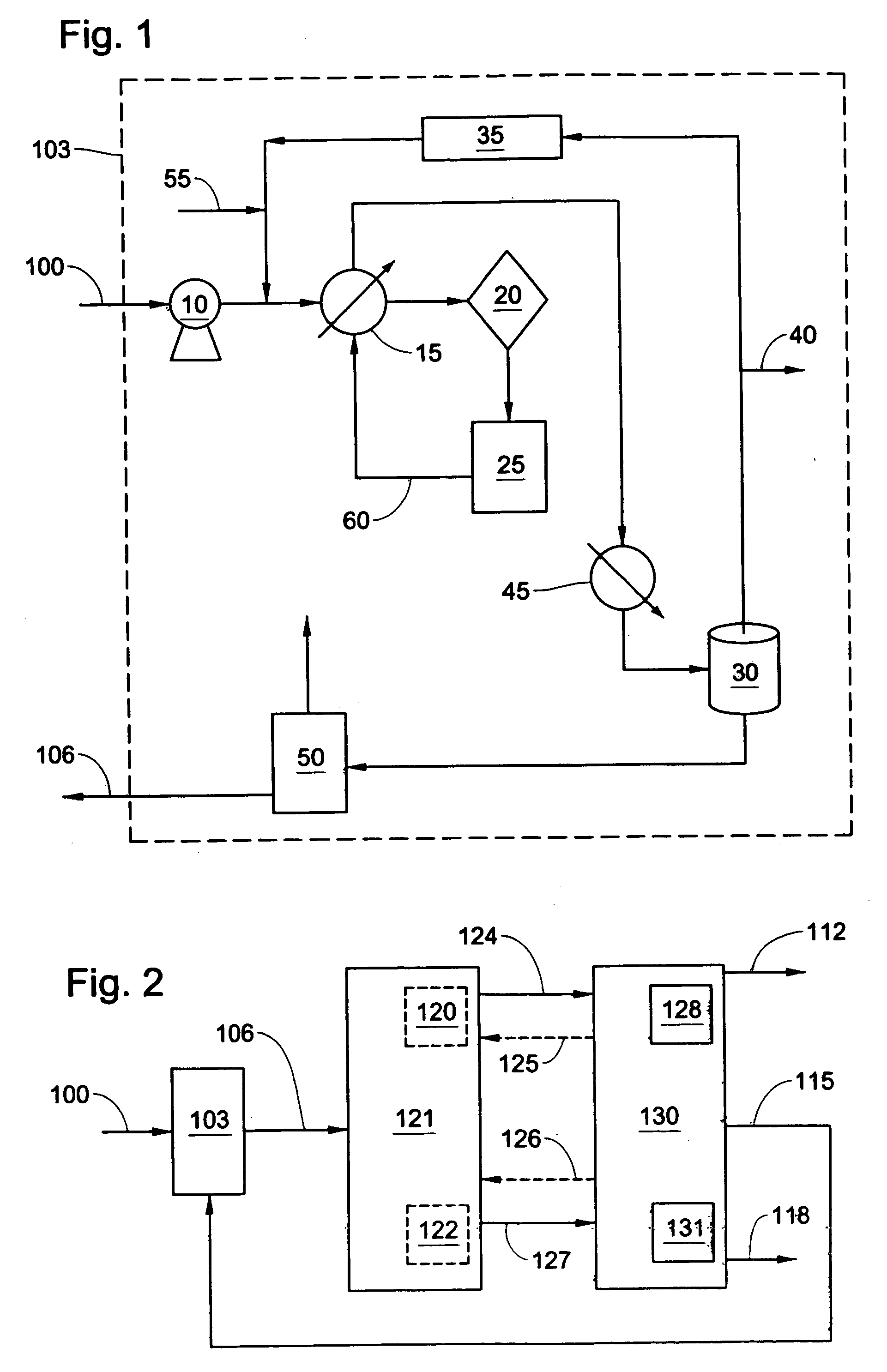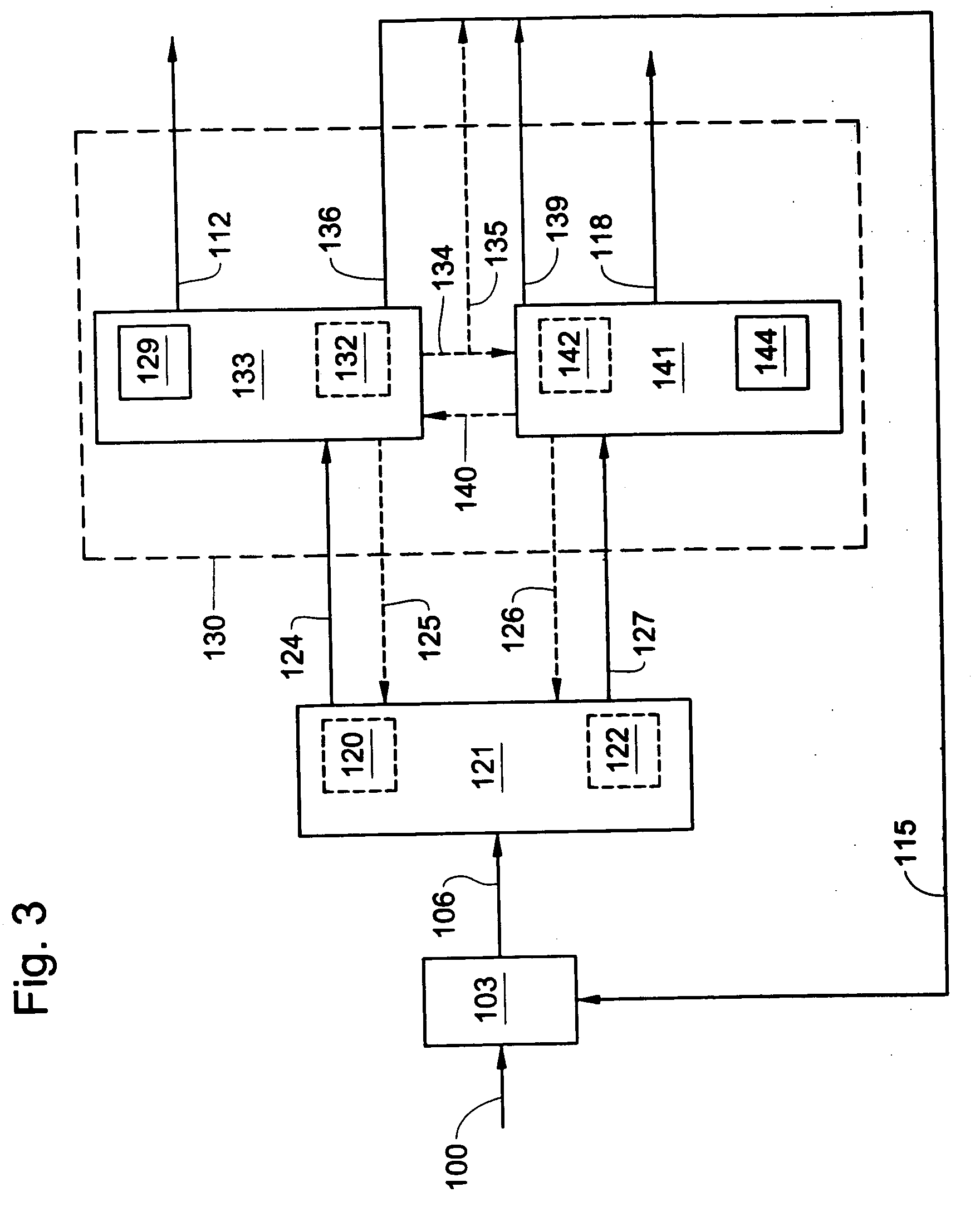Method for separating a multicomponent stream
a multi-component, fluid feed technology, applied in the direction of liquefaction, organic chemistry, lighting and heating apparatus, etc., can solve the problems of high energy cost associated with the separation of mixtures by distillation, substantial rise in energy cost, and general non-commercial use of distillation systems, so as to improve the operation of distillation systems, reduce the total heat duty, and reduce the effect of heat duty
- Summary
- Abstract
- Description
- Claims
- Application Information
AI Technical Summary
Benefits of technology
Problems solved by technology
Method used
Image
Examples
examples
[0046] The Comparative Example, Example 1, and Example 2 are simulations conducted in the distillation design software Simulation Science Pro / II, by Invensys plc. The following assumptions and requirements were selected in the software: a Peng-Robinson thermodynamic method, the column overhead pressure was 156.5 kPa, the columns had a pressure drop of 1.04 kPa per theoretical stage, the change in pressure on the reboiler was equal to the change in pressure per theoretical stage, the condenser pressure on all columns was 135.8 kPa, and the condenser was assumed to run at the bubble point. The aggregate number of theoretical stages in Example 1 is the same as the aggregate number of theoretical stages in the Comparative Example. The aggregate number of theoretical stages in Example 2 is less than the aggregate number of theoretical stages in the Comparative Example. The divided wall column was simulated using two separate columns. One column represented the overall divided wall column...
example 1
[0054] In the first example the fractionation distillation system was applied downstream of a toluene disproportionation unit. The first example can best be understood by an examination of FIGS. 2 and / or 7. However, FIGS. 2 and 7 were not drawn to specifically embody the first example. In the first example, a fluid stream comprising three major components; benzene, toluene, and alkyl benzene, was fed into a toluene disproportionation unit. Within the toluene disproportionation unit the effluent of the toluene disproportionation reactor was modified such that the effluent contained about 15.2 mole percent benzene, 70.4 mole percent toluene, 13.8 mole percent alkyl benzene, the balance mole percent was byproducts, the temperature was 140.6° C., and the pressure was 790.8 kPa. The effluent of the toluene disproportionation unit was then fed into a first distillation column. The heat duty on the reboiler of the first distillation column was about 27,823 kJ / (kg mole product). The first d...
example 2
[0056] The second example can best be understood by an examination of FIG. 5. However, FIG. 5 was not drawn to specifically embody the second example. In the second example the fractionation distillation system, a divided wall column, was applied downstream of a toluene disproportionation unit. In this example the vertical partition was placed along a cross section of the divided wall column such that the internal vapor flow into the feed side of the divided wall was 42.8% of the total vapor flow and the internal liquid flow into the feed side of the divided wall was 28.3% of the total liquid flow. A fluid stream comprising three major components; benzene, toluene, and alkyl benzene, was fed into a toluene disproportionation unit. Within the toluene disproportionation unit the effluent of the toluene disproportionation reactor was modified such that the effluent contained about 15.2 mole percent benzene, 70.4 mole percent toluene, 13.8 mole percent alkyl benzene, the balance mole pe...
PUM
| Property | Measurement | Unit |
|---|---|---|
| pressure | aaaaa | aaaaa |
| pressure | aaaaa | aaaaa |
| temperature | aaaaa | aaaaa |
Abstract
Description
Claims
Application Information
 Login to View More
Login to View More - R&D
- Intellectual Property
- Life Sciences
- Materials
- Tech Scout
- Unparalleled Data Quality
- Higher Quality Content
- 60% Fewer Hallucinations
Browse by: Latest US Patents, China's latest patents, Technical Efficacy Thesaurus, Application Domain, Technology Topic, Popular Technical Reports.
© 2025 PatSnap. All rights reserved.Legal|Privacy policy|Modern Slavery Act Transparency Statement|Sitemap|About US| Contact US: help@patsnap.com



